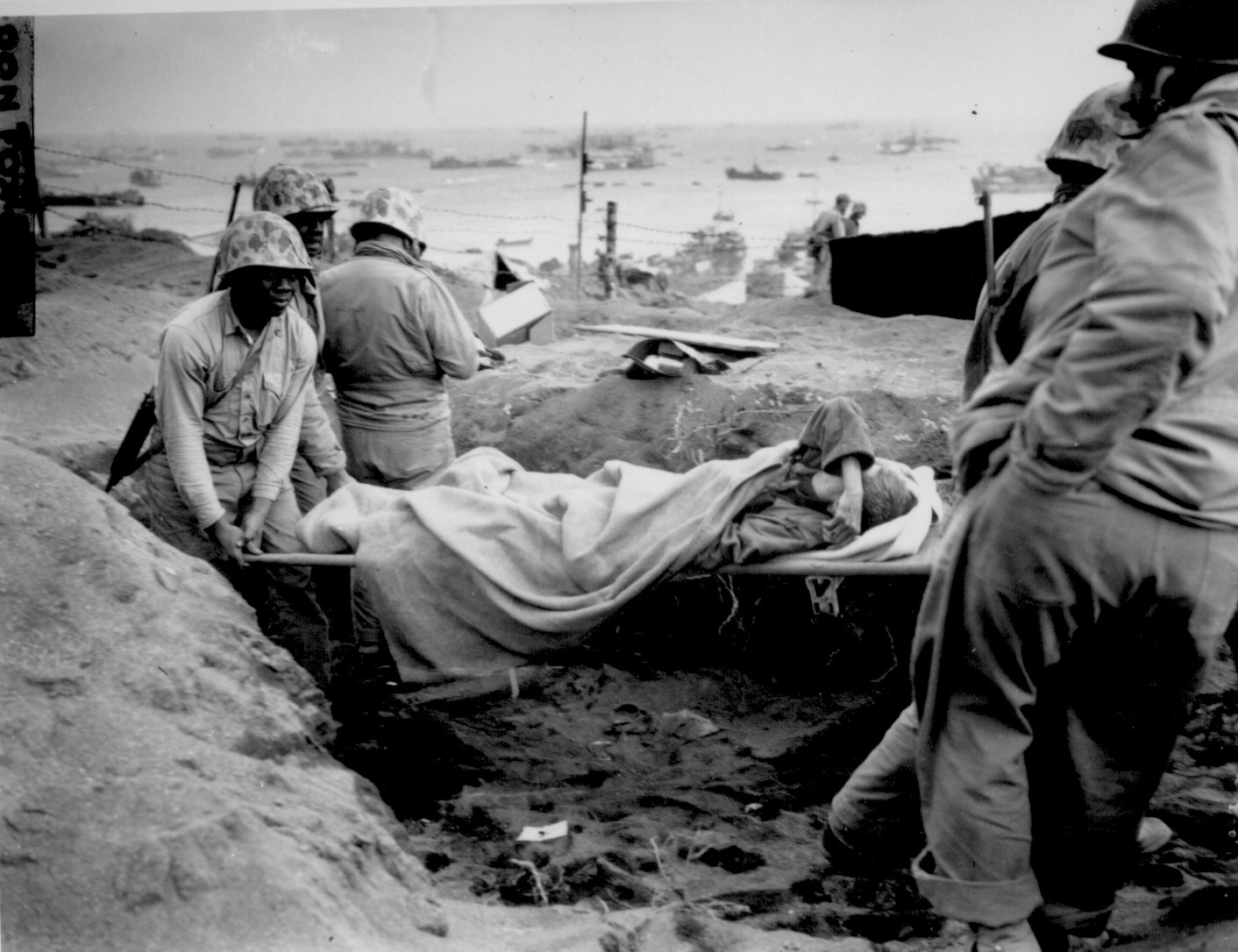
| Historical Information | ||||||
| Caption | African-American US Marines carrying a Japanese prisoner of war, who was suffering from malnutrition, on a stretcher on the beach of Iwo Jima, Japan, 23 Feb 1945 ww2dbase | |||||
| WW2-Era Location Name | Iwo Jima, Japan | |||||
| Date | 23 Feb 1945 | |||||
| Photographer | Don Fox | |||||
| Source Information | ||||||
| Source | ww2dbaseUnited States National Archives | |||||
| Identification Code | 127-N-110622 | |||||
| Related Content | ||||||
| More on... |
| |||||
| Photos on Same Day | 23 Feb 1945 | |||||
| Colorized By WW2DB |
Colorized with Adobe Photoshop |
|||||
| Licensing Information | ||||||
| Licensing | Public Domain. According to the US National Archives, as of 21 Jul 2010: Please contact us regarding any inaccuracies with the above information. Thank you. |
|||||
| Metadata | ||||||
| Added By | C. Peter Chen | |||||
| Photo Size | 1,412 x 1,086 pixels | |||||
Please consider supporting us on Patreon. Even $1 per month will go a long way! Thank you. Please help us spread the word: Stay updated with WW2DB: |
Visitor Submitted Comments
All visitor submitted comments are opinions of those making the submissions and do not reflect views of WW2DB.
Change View
Desktop ViewSearch WW2DB

Map
WW2-Era Location Name:Iwo Jima, Japan
Latitude-Longitude:
24.7551, 141.2984
Random Photograph
Franklin Roosevelt presenting Hiram Bearss and David Dixon Porter Medals of Honor, White House, Washington DC, United States, 25 Apr 1934Current Site Statistics
- » 1,183 biographies
- » 337 events
- » 45,159 timeline entries
- » 1,249 ships
- » 350 aircraft models
- » 207 vehicle models
- » 376 weapon models
- » 123 historical documents
- » 261 facilities
- » 471 book reviews
- » 28,447 photos
- » 365 maps
Famous WW2 Quote
"We no longer demand anything, we want war."Joachim von Ribbentrop, German Foreign Minister, Aug 1939
31 Jul 2009 03:15:20 PM
The Marines strongly resisted the introduction of coloured troops until ordered to do so in June 1942. With the exception of the 51st and 52nd Defense Battalions (neither saw combat), the Corps’ 20,000 blacks were relegated to 51 depot and 12 ammunition companies, which were attached to all-white base and field depots. For all practical purposes these companies were stevedore units used to manhandle supplies and ammunition from the beach to the front, leading them sarcastically to call themselves ‘Ration Box Commandos’. A confidential letter of instruction, issued by the Commandant in March 1943, stated that black NCOs would not be a grade senior to white NCOs, and that few, if any, would be of the same grade. Seven ammunition and 12 depot companies saw limited combat. The 4th Ammo Company, for example, successfully hunted down Japanese stragglers after Guam was declared secure. (US Marine Corps 1941-45, Gordon Rottman, Osprey-Elite, 1995)